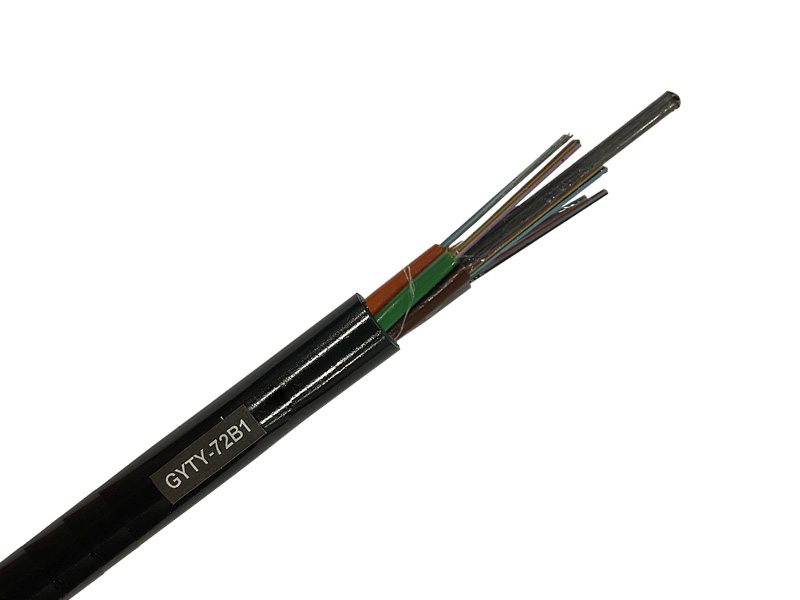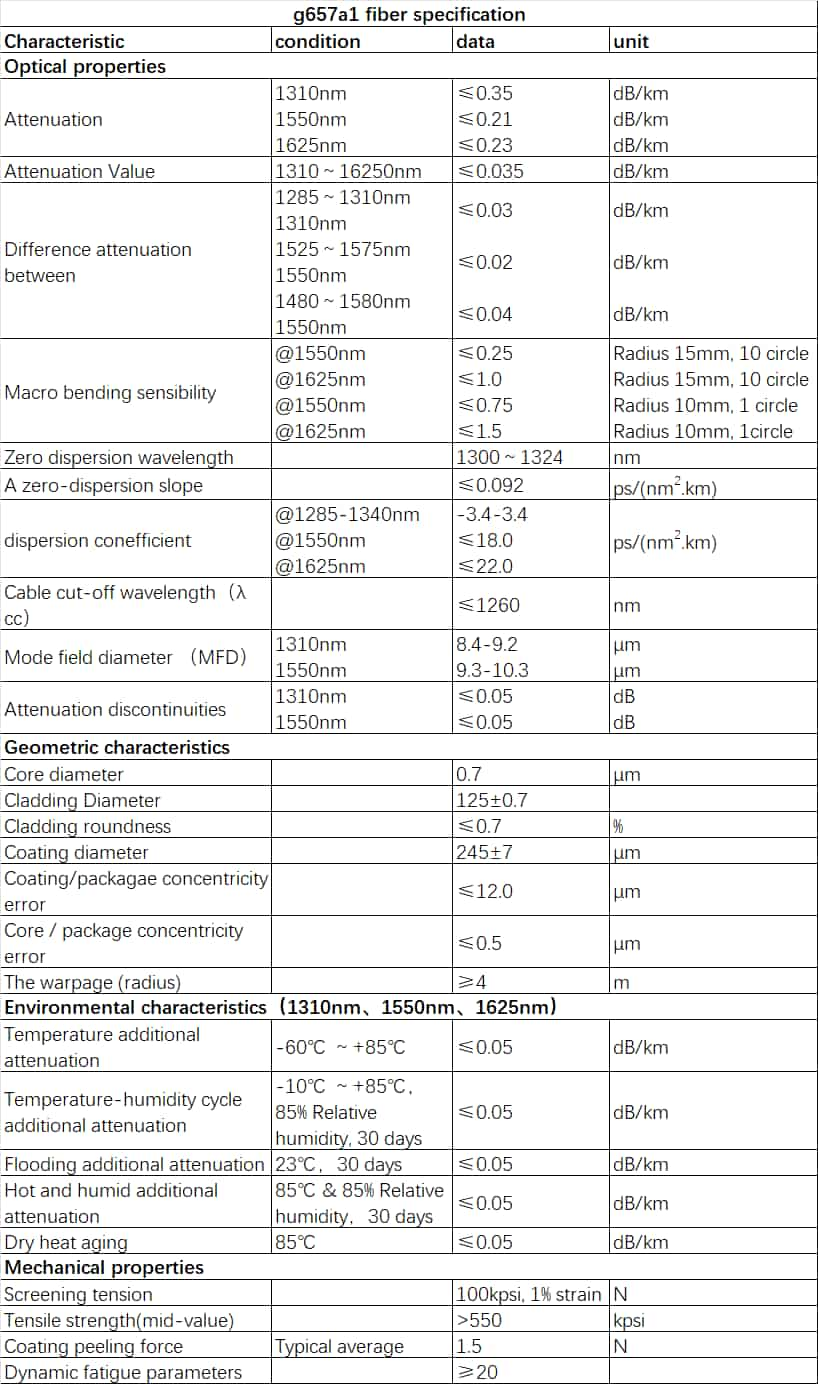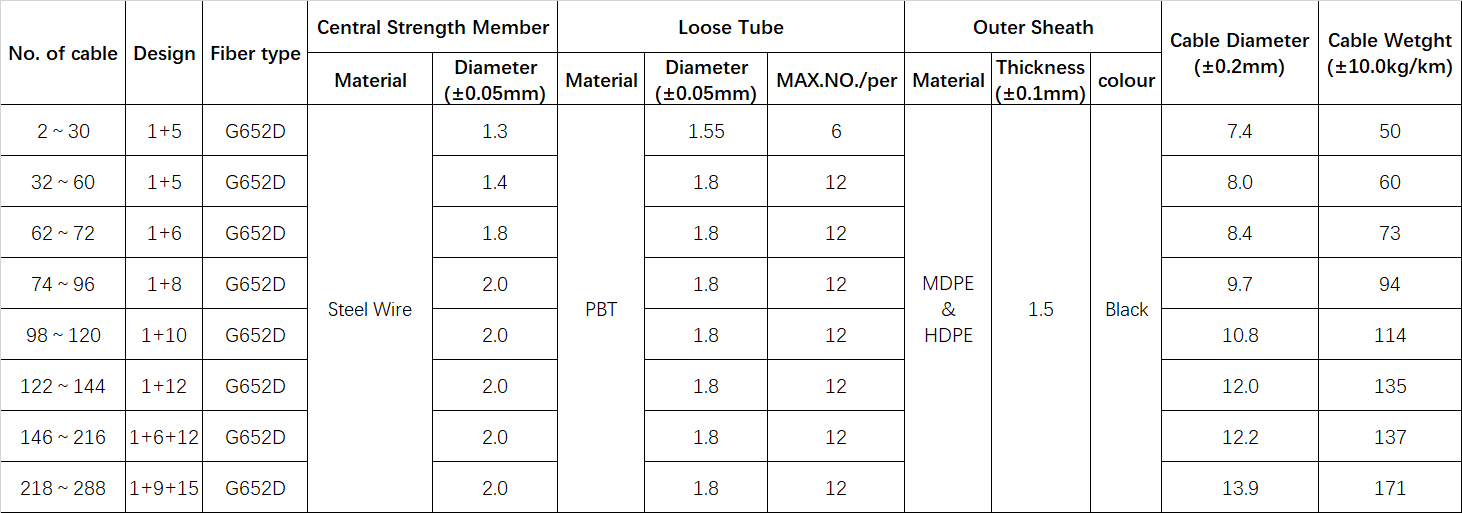
GYTY type optical cable is a metal reinforced component, loose tube twisted filled type, polyethylene sheathed outdoor optical cable for communication.
Application:Aerial/Duct/Outdoor
Operating:-40℃ to +70℃
Storage:-40℃ to +70℃
Standards:Comply with standard YD/T 769-2010
Fiber Type:G652D;G655C;G657A1;G657A2;50/125;62.5/125;OM3-150;OM3-300;OM4 As Options

1、Full-section water-blocking structure ensures good water-blocking performance
2、The loose tube is filled with special grease to provide critical protection for the optical fiber.
3、Phosphated steel wire center reinforcement component has high modulus and corrosion resistance
4、The polyethylene sheath makes the optical cable have good UV resistance
5、Product service life is more than 30 years



1、Clean and test
Before laying optical cables, the pipes should be cleaned section by section and tested. Use a special cleaning tool when cleaning, and use a test rod for a test pass check after cleaning. The inner diameter of the plastic sub-tube inside the pipe should be 1.5 times the outer diameter of the optical cable. When more than two sub-pipes are placed in a cement pipe hole, the equivalent total outer diameter of the sub-pipes should be less than 85% of the inner diameter of the pipe hole.
2、Lay out plastic sub-pipes
When threading two or more plastic sub-pipes, if the pipes are of different colors, the ends do not need to be marked; if the pipes are of the same color or have no color, the ends should be marked separately.
The length of the plastic sub-pipe should not exceed 300m, and the plastic sub-pipe must not have joints in the middle of the pipe. In addition, when laying out plastic sub-pipes, the ambient temperature should be between 50 and +50°C to ensure that their quality is not affected.
The plastic sub-pipes that have been laid out should be fixed with the cement pipes in time to prevent the sub-pipes from sliding. In addition, the sub-tube opening must be temporarily blocked to prevent foreign matter from entering the tube. The plastic sub-pipe should be left with sufficient length in the manhole or hand hole according to the design requirements.
3、Optical cable traction
The length of one optical cable pull should generally be less than 1000m. When this distance is exceeded, segmented traction or auxiliary traction should be added in the middle to reduce cable tension and improve construction efficiency. In order to protect the optical cable from external damage during the pulling process, when the optical cable penetrates into a pipe hole, a pipe bend or intersects with other obstacles. Protection measures such as guide devices or bell mouth protection tubes should be used. In addition, neutral lubricant and other materials can be applied to the outside of the optical cable as needed to reduce the frictional resistance when the optical cable is pulled.
4、Reserve margin
After the optical cables are laid, the optical cables should be placed on the specified pallets one by one in the manholes or hand holes, and an appropriate margin should be left to prevent the optical cables from being too tight. When optical cables in manholes or hand holes need to be connected, the reserved length should comply with the minimum values specified in the table below.
Table Required reserved lengths for optical cable laying
5、Joint processing
The optical cable must not have a joint in the pipe hole in the middle of the pipe. When the optical cable does not have a joint in the manhole, the optical cable is required to be bent and placed on the optical cable pallet for fixation and binding. It must not pass directly in the middle of the manhole. Otherwise, it will not only affect construction and maintenance, but also easily cause damage to the optical cable. When the optical cable has a connector, it should be protected by snake-shaped hose or soft plastic tube and other materials, and placed on the pallet to be fixed and tied.
6、Blocking and marking
The outlet end of the tube hole where the optical cable is placed should be tightly sealed to prevent water or debris from entering the tube. Optical cables and their connections should have identification marks, and the number, cable model and specifications, etc. should be indicated.
Standard length:2000m, other lengths are also available
